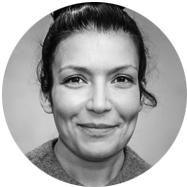 Espen Aarseth is professor of game studies and head of the Center for Computer Games Research at the IT University of Copenhagen. He holds a Cand.Philol. in comparative literature and a Dr.Art. in humanistic informatics, both from the University of Bergen. He is co-founding Editor-in-Chief of the journal Game Studies (2001-), and an ERC Advanced Grant Laureate for the project MSG – Making Sense of Games (2016-2021).
Espen Aarseth is professor of game studies and head of the Center for Computer Games Research at the IT University of Copenhagen. He holds a Cand.Philol. in comparative literature and a Dr.Art. in humanistic informatics, both from the University of Bergen. He is co-founding Editor-in-Chief of the journal Game Studies (2001-), and an ERC Advanced Grant Laureate for the project MSG – Making Sense of Games (2016-2021).
Author: hevga
Jonathan Elmergreen

Jonathan Elmergreen is the Executive Director for the Higher Education Video Game Alliance, the international professional association for faculty, students, and institutions that work in video games, interactive media, and digital media. In his work with The Alliance, he serves members of the games and higher education community through field building, academic services, public advocacy, and policymaker engagement. Under Jonathan, membership has grown to represent over 310 universities worldwide, and HEVGA has become a global leader and voice in games through strategic global partnerships with governing bodies, agencies, foundations, associations, and organizations and a strong network of esteemed fellows, scholars, and members.
Prior to HEVGA, Jonathan worked at the Games+Learning+Society Center at the University of Wisconsin – Madison in both executive administration and research, helping to implement the vision of the co-directors, Constance Steinkuehler and Kurt Squire. Here he strategically planned key meetings and events with high-profile leaders, oversaw multi-team projects, and managed large budgets and grants.
Elmergreen’s academic background is in games and learning, social interaction, conversation analysis, and ethnography, and has researched areas ranging from games and literacy to interactions between doctors and terminal cancer patients. Throughout his academic career, Jonathan has received several research grants and regularly serves on numerous committees and advisory boards.
Outside the university, Elmergreen has served as the president of a scholarship foundation to support college students, been the co-founder of a climate change carbon mitigation app, the director of a gaming convention, and served in AmeriCorps.
 Mirjam Palosaari Eladhari is an associate professor at the Department of Computer and System Sciences (DSV) at Stockholm University (SU) in Sweden where she teaches game design, artificial intelligence (AI) , and game research methods. Her work connects AI, game design, interactive narrative and computational expression. A main theme of her research is co-creation, in particular how players can add stories and elements from their real lives in order to help them reflect on their own existence and gain new perspectives.
Mirjam Palosaari Eladhari is an associate professor at the Department of Computer and System Sciences (DSV) at Stockholm University (SU) in Sweden where she teaches game design, artificial intelligence (AI) , and game research methods. Her work connects AI, game design, interactive narrative and computational expression. A main theme of her research is co-creation, in particular how players can add stories and elements from their real lives in order to help them reflect on their own existence and gain new perspectives.
Mirjam has worked as a lead game designer and programmer both in the industry and in various research projects, such as the EU project C2Learn. Mirjam is a board member of HEVGA and ARDIN, and active member of the EU project INDCOR (Interactive narrative design for complexity representation) as well as an associate editor of IEEE Transactions on Games. During 2021 she was an independent expert for the EC, in regards to the “A European AI On Demand Platform and Ecosystem” (AI4EU) a project feeding into a new and comprehensive strategic research innovation agenda for Europe. Mirjam’s dissertation was in computing science (Teesside University, UK, 2010), and included work done at UC Santa Cruz, Georgia Institute of Technology and Tokyo Institute of Technology. She explored, by making prototypes, characterisation and story construction in MMO’s focusing on character/agent AI.
At the moment (2022) she is starting up the project PSP (Platform for Smart People) together with her colleagues at SU and KTH. PSP will create a platform using IoT technologies and machine learning helping people with cognitive diversities, such as autism, in their everyday lives. Besides, she works as an independent game designer under the label Otter Play. Mirjams hobby is drawing and painting.
Drew Davidson
 Drew Davidson is a professor, producer and player of interactive media. His background spans academic, industry and professional worlds. He is interested in stories across texts, comics, games and other media.
Drew Davidson is a professor, producer and player of interactive media. His background spans academic, industry and professional worlds. He is interested in stories across texts, comics, games and other media.
Drew is the Director of the Entertainment Technology Center at Carnegie Mellon University and the Founding Editor of ETC Press and its Well Played series and journal. He helped create the Sandbox Symposium, an ACM SIGGRAPH conference on video games and served on the IGDA Education SIG and serves on many advisory, editorial and review boards as well as judge and jury panels. He is the lead on several grants with Macarthur and Gates, and has written and edited books, journals, articles and essays on narratives across media, serious games, analyzing gameplay, and cross-media communication.
Katherine Isbister
 Katherine Isbister is a Human Computer Interaction and Games researcher who studies and designs digital games and other playful computer-supported experiences. Her focus is emotion and social connection–understanding the impact of design choices on these qualities, and getting better at making and evaluating digital experiences that support and enhance social and emotional experience. Her lab group’s work has been cited in Wired, Scientific American, and NPR, among other venues.
Katherine Isbister is a Human Computer Interaction and Games researcher who studies and designs digital games and other playful computer-supported experiences. Her focus is emotion and social connection–understanding the impact of design choices on these qualities, and getting better at making and evaluating digital experiences that support and enhance social and emotional experience. Her lab group’s work has been cited in Wired, Scientific American, and NPR, among other venues.
Isbister is currently a full professor in the Department of Computational Media at the University of California, Santa Cruz, where she is a core faculty member in the Center for Games and Playable Media. Until June 2015, she was an associate professor jointly appointed between the Computer Science department at New York University’s School of Engineering in Brooklyn, and the NYU Game Center, and was the founding Research Director of the Game Innovation Lab at NYU’s School of Engineering.
After completing a Ph.D. at Stanford University, where she studied Communication as well as Human-Computer Interaction, Isbister worked in research labs in Japan, Sweden, Denmark, and the U.S., and in software start-ups and design consultancies (past clients include Microsoft, Paramount, BMW, Electronic Arts, Ubisoft, and others), in addition to being a research professor. Along the way, she has written several books: Better Game Characters by Design,Game Usability, and most recently, How Games Move Us. Better Game Characters was nominated for a Game Developer Magazine Frontline Award. In 1999, she was selected as one of MIT Technology Review’s TR100 Young Innovators most likely to shape the future of technology.
LINDSAY GRACE — Vice President
 Lindsay is Knight Chair in Interactive Media and an associate professor at the University of Miami School of Communication. He is Vice President for the Higher Education Video Game Alliance and the 2019 recipient of the Games for Change Vanguard award. Lindsay’s book, Doing Things with Games, Social Impact through Design, is a well-received guide to game design. In 2020, he edited and authored Love and Electronic Affection: a Design Primer on designing love and affection in games
Lindsay is Knight Chair in Interactive Media and an associate professor at the University of Miami School of Communication. He is Vice President for the Higher Education Video Game Alliance and the 2019 recipient of the Games for Change Vanguard award. Lindsay’s book, Doing Things with Games, Social Impact through Design, is a well-received guide to game design. In 2020, he edited and authored Love and Electronic Affection: a Design Primer on designing love and affection in games
His work has received awards and recognition from the Games for Change Festival, the Digital Diversity Network, the Association of Computing Machinery’s digital arts community , Black Enterprise and others. He authored or co-authored more than 50 papers, articles and book chapters on games since 2009. His creative work has been selected for showcase internationally including New York, Paris, Sao Paolo, Singapore, Chicago, Vancouver, Istanbul, and others. Lindsay curated or co-curated Blank Arcade, Smithsonian American Art Museum’s SAAM Arcade, the Games for Change Civic and Social Impact and others.
He has given talks at the Game Developers Conference, SXSW, Games for Change Festival, the Online News Association, the Society for News Design, and many other industry events.
Between 2013 and 2018 he was the founding director of the American University Game Lab and Studio. He served as Vice President and on the board of directors for the Global Game Jam™ non-profit between 2014-2019. From 2009 to 2013 he was the Armstrong Professor at Miami University’s School of Art. Lindsay also served on the board for the Digital Games Research Association (DiGRA) between 2013-2015.
ANDREW PHELPS — President
 Andrew Phelps serves as a Professor in the Film & Media Arts division of the School of Communication at American University, and as Director of the AU Game Center, a multidisciplinary effort that engages faculty, staff, and students from several divisions and departments across AU. He also holds a joint appointment as a Professor in the Computer Science Department in the AU College of Arts & Sciences. AU offers several degrees and certificates relative to games and media, including an MA in Game Design and an MFA in Games and Interactivity, and Phelps advises students in these programs as well as other areas of media arts and computing.
Andrew Phelps serves as a Professor in the Film & Media Arts division of the School of Communication at American University, and as Director of the AU Game Center, a multidisciplinary effort that engages faculty, staff, and students from several divisions and departments across AU. He also holds a joint appointment as a Professor in the Computer Science Department in the AU College of Arts & Sciences. AU offers several degrees and certificates relative to games and media, including an MA in Game Design and an MFA in Games and Interactivity, and Phelps advises students in these programs as well as other areas of media arts and computing.
In addition to these permanent roles, Phelps also holds a visiting lectureship at Uppsala University in Sweden through the transformative play initiative within the Department of Game Design. This work is centered largely on collaborations involving his interests in existential, transformative play, and theorizing a design framework for games of this type through collaborations with Dr. Doris Rusch and other faculty at the Gotland campus.
Prior to July of 2019, Phelps served as a Professor of Art & Design in the College of Art & Design at the Rochester Institute of Technology (RIT), and before that as a Professor in the B. Thomas Golisano College of Computing & Information Sciences at RIT, for nearly 20 years. He is the founder of the RIT School of Interactive Games & Media, the founder of the RIT Center for Media, Arts, Games, Interaction & Creativity (MAGIC) and the founder of MAGIC Spell Studios at RIT, the last of which is a $25M public-private partnership between RIT and the State of New York to help expand the games, film, and media industries in New York.
His work in games programming education has been featured in The New York Times, CNN.com, USA Today, National Public Radio, IEEE Computer, and several other articles and periodicals. He regularly publishes work exploring collaborative game engines and game engine technology and maintains a website featuring his work as an educator, artist, programmer, and game addict. Primary research and teaching interests include online gaming, electronic entertainment, 3 dimensional graphics and real time rendering, virtual reality, and interactive worlds.
A total of 387 participants completed the 2019 Survey of Program Graduates. These individuals identified themselves as having completed or being in the process of completing a video-game-based program at a post-secondary institution. The participants included both undergraduate and graduate students.
For those based in the United States, the average salary of all employed survey participants was $61,000. For full-time workers, the average salary was $68,000. This is significantly higher than the median salary of all American workers, which is reported to be $36,300. This average includes all workers, regardless of education level.
Compared with workers with similar education outcomes, game program alumni seemed to earn slightly more, though exact comparisons proved challenging. For example, respondents between 22 and 30 years of age earned an average of $57,500 per year. In comparison, starting salaries for all post- secondary graduates in the US in 2018 were reported as $50,390.
Across the survey sample, women on average earned $61,750. Men, on average, earned $59,730.
Salaries steadily increased, except for the oldest cohort. For example, the youngest cohort of respondents (17-21 years) earned an average salary of $40,000, while those between the ages of 31- 40 earned approximately $76,200.
A total of 387 participants completed the 2019 Survey of Program Graduates. These individuals identified themselves as having completed or being in the process of completing a video-game-based program at a post-secondary institution. The participants included both undergraduate and graduate students.
84% of respondents stated that they were currently employed. This included full-time, part-time, and contract work, as well as self-employment. The rate of employment increased with the age of respondents. For example, 70% of the youngest cohort of respondents reported being employed compared with 100% of the oldest cohort.
Of those in the 2019 survey who reported being employed, approximately 77% had full-time work, 16% had part-time work, and 5% were self-employed. 12% indicated that they had secured contract work.
From the data, it is reasonable to conclude that respondents engaged in multiple forms of work. For example, of the 251 respondents who described their work as full-time, 34 also indicated that they did contract work on top of their employment (9% of the entire sample). With respect to employment type, the percentages did not change significantly from the 2015 survey, although the previous survey did not explicitly ask about contract work.
A total of 387 participants completed the 2019 Survey of Program Graduates. These individuals identified themselves as having completed or being in the process of completing a video-game-based program at a post-secondary institution. The participants included both undergraduate and graduate students.
With respect to the respondents from the United States, most were White (54%). Those who identified as being of Asian descent were 17% of respondents, while those of Latinx descent were 16% of respondents. Black or African-American individuals made up 7%. Less than one percent of respondents identified as either Middle Eastern or Native American. When reporting their ethnicity, respondents could choose more than one option. Approximately 6% of people identified as being of “Mixed” ethnicity. Most frequently, individuals of mixed ethnicity identified as being White and one other ethnicity.
“Not a lot of African Americans in the industry. It’s so far not been negative, but there’s always just a sense of perspective that I rarely can share with someone else without having to fully articulate it.” – Game Designer
Compared with the overall US population, the 2019 Survey of Program Graduates had a significantly lower number of Whites (54% versus 76.6%), a higher percentage of Asians (17% versus 5.8%), a similar number of Latinx (17% versus 18.1%), and a lower number of Black or African Americans (7% versus 13.4%). There were notable differences with respect to the ethnicity of respondents between the 2015 HEVGA Survey and the results of the 2019 survey. The 2019 survey had approximately 20% fewer White respondents. This is a remarkable difference, which could reflect changes in admissions to games programs across the US. Alternatively, it could be a sampling discrepancy, especially considering that the 2019 survey had approximately twice as many participants. There was an increase of 11% for respondents identifying as Latinx and an increase of 8% for those of Asian descent. There was a slightly more than 1% increase in respondents who identified as Black or African-American.
